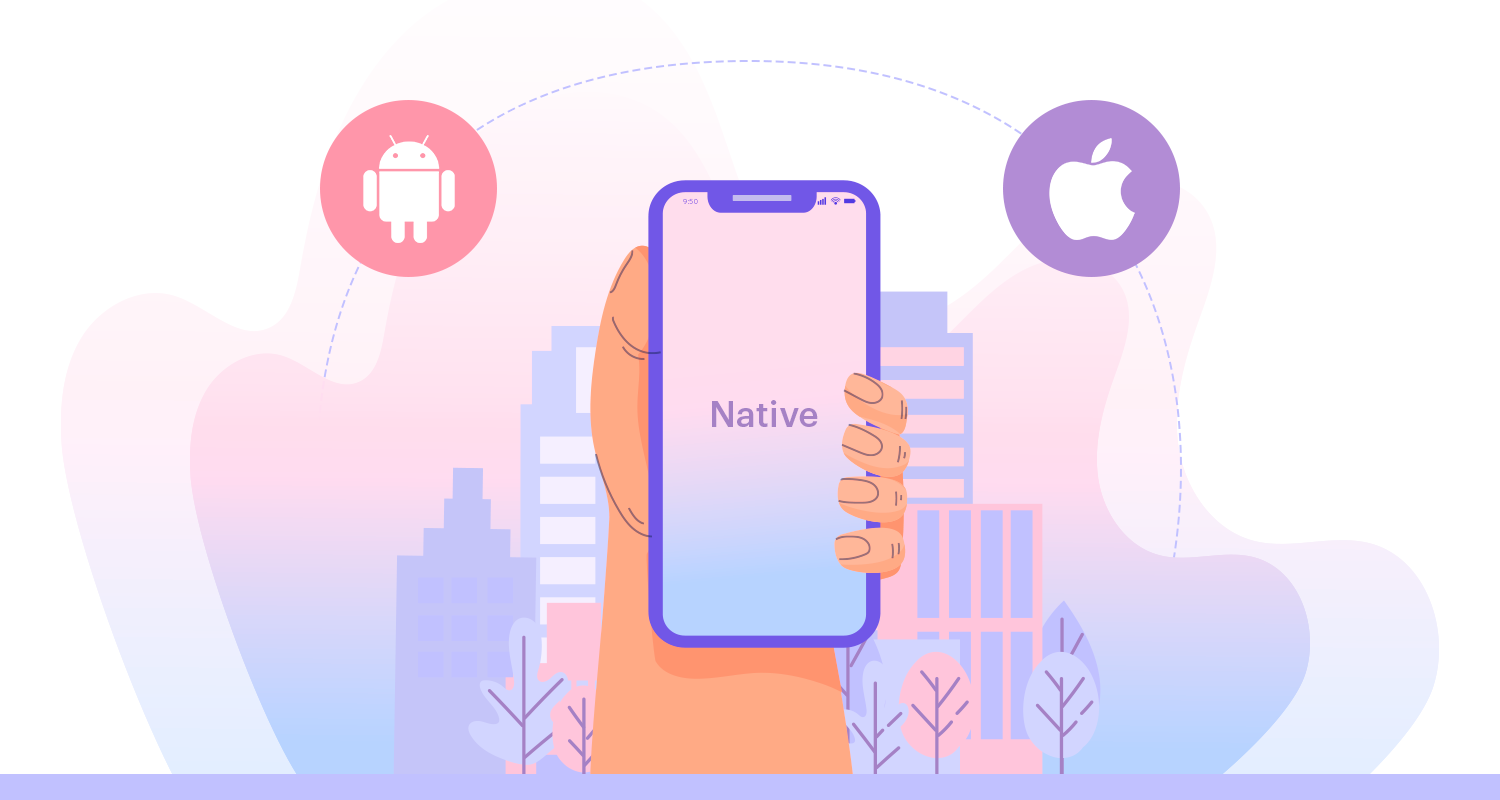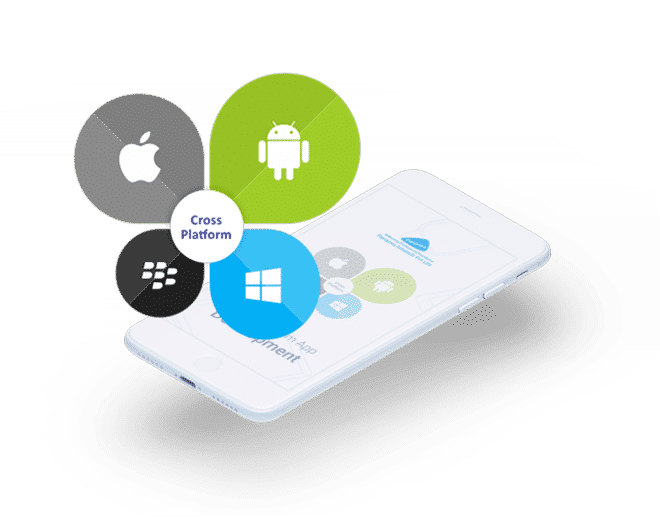The number of available apps in the Google Play Store recently has reached 2.65 million, surpassing one million in 2013. And about 2.18 million mobile apps are available on the Apple App Store now, compared with one million in 2015. These numbers and growth are more than impressive. It might even seem that there is no point in creating anything new, since everything has already been created. In reality, these impressive figures only show that app development is a booming market, growing bigger and faster year by year.
However, are all of these applications really good and unique? Of course, not. Most of them copy each other, often do not have a nice user-friendly design, and cannot always bring real tangible profit to their owner.
How to build an app that can truly succeed and stand out from so many others? The answer is simple: your business can resort to custom app development. In this article, we’ll outline all the advantages of this approach, explain what a custom app is, and guide you through the price and development timeframe. Let’s jump right in!
What is a custom application?
Each enterprise has its own peculiarities. Such an application is created to meet the needs of a particular company and its clients. Custom app development takes into account the specific internal processes of your business, for example, the process of distributing items between storage and pickup points or selecting a cab driver for a ride. It also offers unique functionality: for example, it can track the movement of a delivery person with an order or broadcast live from the kitchen while the pizza is being made. The design of such an application usually implements the user interface in accordance with the corporate style of the company.Moreover, custom mobile app development allows you to choose the target platforms on which they are going to run. Such applications do not depend on the limitations inherent in the other software development approach – the development of off-the-shelf applications. Let’s take a closer look at the difference between these two.
Custom applications vs. off-the-shelf applications
In addition to custom applications, there are also off-the-shelf applications. Such applications contain ready-made tools with a set of features that can be plugged in as needed. They can be created quickly and don’t require much effort or in-depth knowledge of software development to run. This approach seems to be a perfect choice. However, custom app development may bring much more profit to your business. And now, we are going to explain why.
Custom app development will bring your business higher profit than an off-the-shelf solution.
Scalability
In the modern world, everything is changing rapidly, and businesses need to keep up. However, off-the-shelf applications do not have the ability to scale and adjust to evolving business requirements. They are unlikely to allow you to easily add any feature you need if it was not originally provided by the creator of the ready-made solution. In that case, you can try contacting the development team. Yet, often the source code of the off-the-shelf applications is hard to refine. The functionality offered by an off-the-shelf application often may not fully match the internal processes of your business. Sometimes it will suggest an option that may not feel particularly suitable. Then you may have to rebuild your business to fit the application or make a new one altogether, which is not the most pleasant scenario.Any custom app, on the other hand, is very responsive to changes. It allows you to easily add code for any desired functionality. The only thing that would limit the developers is the initial architecture. Consequently, the development potential of your online business depends only on the skills and experience of the software developers.
Tech support
Support is another key issue here. Often the developers of a ready-made application claim that it is included in the price, but, in fact, it is not always possible to ensure a decent level of support. Sometimes, it can be very limited. And sometimes the startup you purchased the app from can simply shut down. Third-party support for an off-the-shelf app may be very expensive and not always efficient.Custom app development always implies its further support. Most often, a long-term contract is signed with the team that originally provided the software development. It includes the maintenance of all technical documentation and further upkeep of the program. In any case, the code of a custom app makes it easy to turn to another development team. Here is where well-drafted technical documentation comes in handy. And clean code written in accordance with standard patterns and best practices is quite easy to grasp, even for non-creators.
Data security
When developing any application, special attention should be focused on the security of user data. Successful hacking, entailing a leak of user data, causes huge damage to a company’s reputation. An application with a poor reputation quickly loses the trust of users.Off-the-shelf apps use the same information security features. A vulnerability found in one of them puts all those types of apps at risk. Certainly the creators of off-the-shelf applications try to fix the vulnerabilities, but you cannot be sure that the next update will not introduce new weaknesses in the application. So the risk is always there. This way, choosing an off-the-shelf approach will not guarantee you the trust of your customers. And therefore, it won’t guarantee income either.
The choice to build custom apps allows you to decide which information protection tools to use. You can fully secure your application according to the architecture on which it is built. Consequently, a unique custom app would have its own unique vulnerabilities that experienced security professionals can foresee and avoid during development. Thus, the security of your application data depends only on the choice of an experienced development team.
Large companies such as Netflix, Airbnb, ByteDance (creator of TikTok) prefer to invest in custom app development to give their customers a better user experience.
If you want to gain the trust of your customers and build a solid foundation for your online business, Brivian can help you with that. For all questions related to custom app development, please contact us. To do this, you can leave a request at the end of the article.
Types of custom apps
Since choosing the right type of custom app is the starting point for creating a successful mobile app, it is important to understand the differences in their types and know which one is best suited to your business needs. Let’s take a closer look at the options available.Native
This type of custom app is created for a specific platform. The most popular mobile platforms at the moment are Android and iOS-based operating systems. The main advantage of native applications is the great popularity of this technology among developers. It means that hiring specialists with good expertise in this area would not be very difficult or expensive.
Custom app development may focus on creating native applications for a specific platform.
Besides, native custom apps are high performance because they make the most of the platform’s capabilities. This is achieved through the compatibility between the platform and programming languages. Such languages as Objective-C and Swift are used for the custom mobile app development on IOS. And for Android development, the most popular languages are Java and Kotlin.
Although native apps require more resources to develop, they can use the built-in features of the devices on which they run. For example, push notifications, geolocation, and camera access.
Progressive Web App
This type of custom app development is one of the cheapest and easiest. A PWA is basically a website that uses special software interfaces to access the capabilities of a device, such as smartphone memory. Such an application can be accessed from an icon on the desktop, but the application does not require installation, as it runs in a separate browser window. The advantage of this approach lies in the ability to work on a variety of devices, even on rather old models.The main drawback of this type of app is the difficulty of distributing it. PWA is not available on the Apple App Store and Google Play Store, so it can only be obtained from your company’s website.
Hybrid
Developing fully native apps is expensive and time-consuming. It also requires two development teams if you want your app to work on both iOS and Android. To make the development process cheaper, there is an approach where a web page runs on top of the mobile app. With this approach, you can put your website with all of its JavaScript, HTML, CSS code into the app resources. Hybrid mobile apps can also use most of the features of a native app, but their interface may be less user-friendly. However, unlike PWA, which is also a web page, the hybrid app can be downloaded from the Apple App Store and Google Play Store.
Hybrid apps make custom app development cheaper.
Cross-platform
This type of application is a single codebase that works regardless of the platform. This provides a huge advantage, since only one development team is required to create a cross-platform custom application. The choice of cross-platform frameworks depends on the kind of technology your team is more accustomed to working with.
Custom app development sometimes focuses on creating cross-platform apps.
If your developers’ primary technology stack is JavaScript or TypeScript, then React Native is the best choice. It focuses on creating a user interface for mobile devices. That makes it a suitable option for apps that require high responsiveness and an intuitive interface. React Native is an open-source platform with a large community of developers. Applications such as Facebook, Instagram, and Pinterest have been created using this framework.Flutter is a framework developed by Google that uses Dart, a programming language optimized for fast apps on any platform. Flutter is very good for MVP startup development due to its Hot-Reload feature. It reflects code changes without restarting the application.
Kotlin Multiplatform is suitable for Java/Kotlin developers. It allows to write platform-independent business logic and compile it into Kotlin library for Android and Universal Framework for iOS.
The main difficulty in developing cross-platform apps is more complex code design than native apps have. Developers have to account for device and platform differences. They also need more experience to ensure high performance of cross-platform apps.
How to develop a custom application?
Custom mobile app development is generally similar to the development of any software. It consists of several stages.1. Conceptualization and market assessment
The most important thing in development is to understand what kind of app your target audience needs. After all, no one would want to waste their time using a useless app. It is also very unlikely to win the interest of users with a clone of a popular app. Hence the need to identify the main killer features of your future app. Those can help you get an edge over your opponents and obtain the proper interest in your company.2. Design development
Eye-catching and memorable designs help draw users’ attention to your app. However, a lot of work needs to be done to create a user-friendly and accessible user interface. It is worth achieving a highly intuitive navigation within the app to leave the user with a good impression and a desire to use your app again. UX/UI design is a particularly important part of the app. After all, sometimes the best functionality becomes inaccessible and unexplored by the user because the interface is illogical and not user-friendly.3. MVP creation
The design and basic functionality are defined, so it’s time to move on to implementation. The most logical solution is the development of MVP (Minimum Viable Product), i.e., a version that has the minimum set of features, sufficient to verify the concept of the application and present it to the first users. At this stage, the main thing is not to pay attention to the side functionality, that is not the core component of your project.4. Testing
An integral and very important part of any development process. The best option is to conduct testing in parallel with the work on the project, starting from the very first stages of development. The higher the coverage of the functionality by the tests, the more reliable the system is. Regular regression (i.e., check of operability after changes in the code) and sanity (i.e., check of operation of critical functions) testing allows you to quickly detect defects and malfunctions in the application logic.5. Soft launch
When the MVP is developed and testing shows stable functionality, it’s time to release the app and find out reaction from users. However, it’s worth checking the viability of your project on a small test group first. By studying their experience, usage statistics and feedback, you can adjust the logic or design of your app.6. Release
After reviewing metrics and feedback, fixing bugs, and making changes, your app is ready to go to release and become available to all potential users. At this point, it’s important to be prepared for the growing popularity and workload. Once you’ve managed this stage, you’ll be able to gain the trust of your users.7. Expanding functionality and support
Finally, when your app is already in active use, all that’s left to do is to promptly resolve issues and add functionality that was originally defined as secondary. If added, it can improve the user experience of your audience and attract new customers.How much does it cost? How long will it take?
We’ve covered all the ins and outs of custom app development. Now it’s time to answer the two most important questions.There is a huge variety of prices for custom mobile app development. It can start at $30,000 and not even end at $200,000. The two most important factors affecting development costs are the composition of the development team and the complexity of the app itself.
On average, the team needed to develop a not very complex project consists of a project manager, a business analyst, a team leader, four programmers (backend and frontend), a QA engineer, a UX/UI designer and a DevOps engineer.
It takes an average of 640 hours to develop an MVP, which is 4 months. This implies that the medium budget for the development of an application of average complexity starts at $64,000.
However, it’s worth keeping in mind that the final price of the product depends on the average developer’s salary in a certain region, as the hourly rate can differ depending on the location.
Conclusion
The mobile app market is growing every year. It is simply vital for your business to have an online platform in order for it to thrive and attract more customers. There are many ways to achieve this, such as resorting to buying an off-the-shelf app. However, if you want your business to have the respect of customers and stable technical support, then building a custom app is the most reliable and effective option.Brivian will help your business discover new opportunities. Leave a request for our experts to contact you. We will discuss what type of custom app you want to create, make an accurate estimate of the project cost and development timeframe. Rest assured that together, we will make your business stand out from the others.